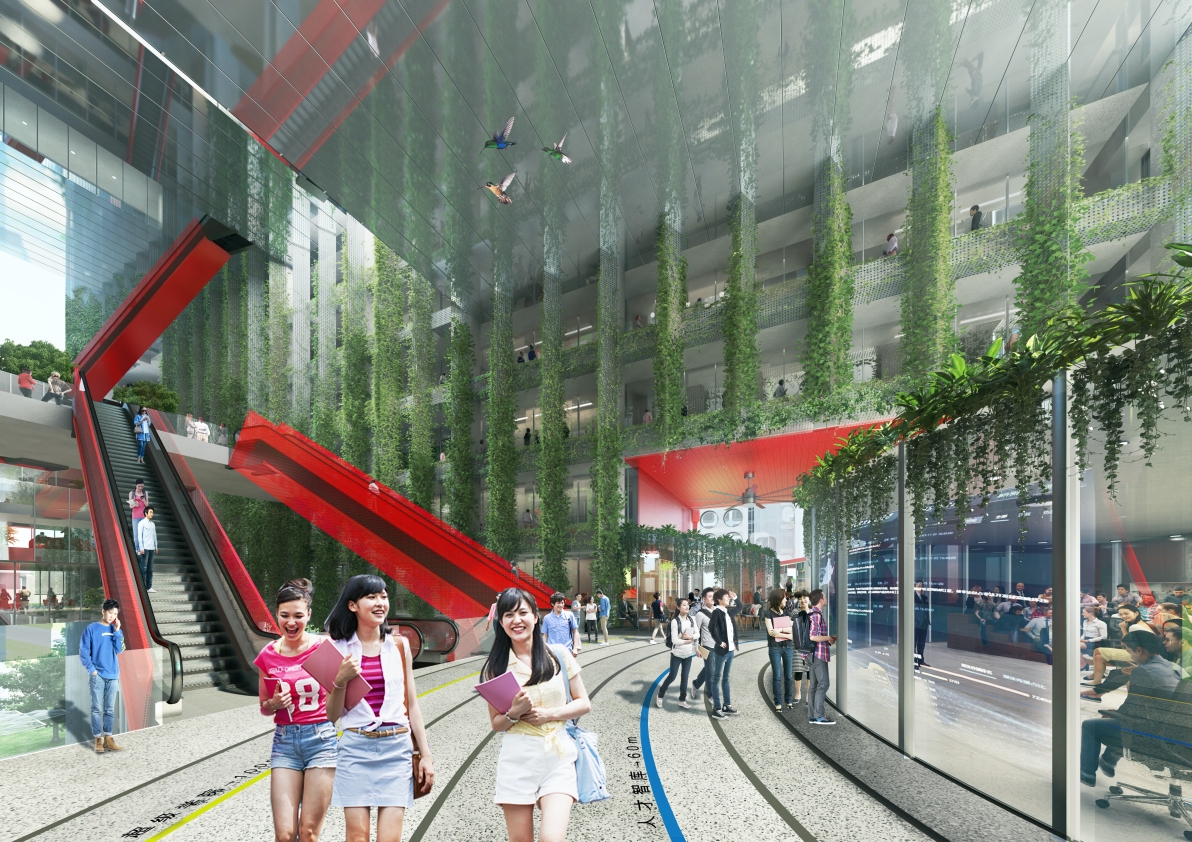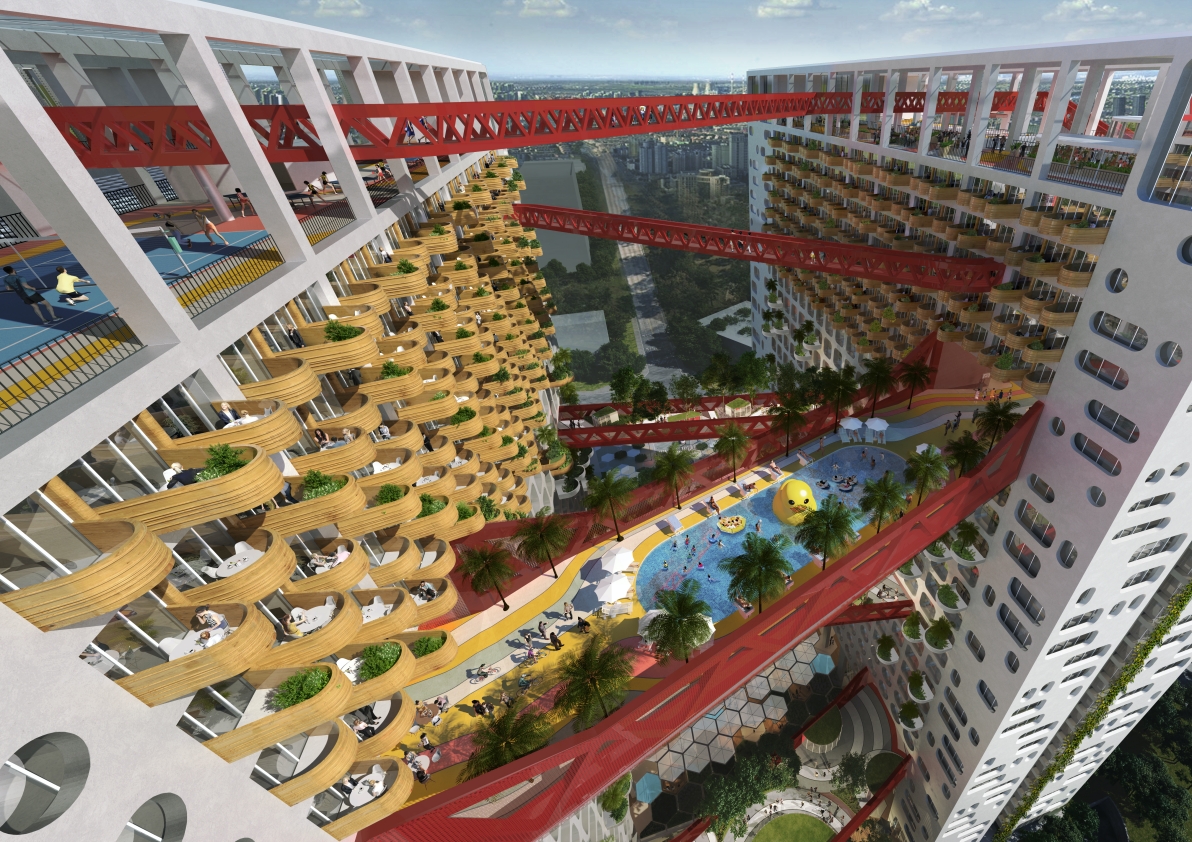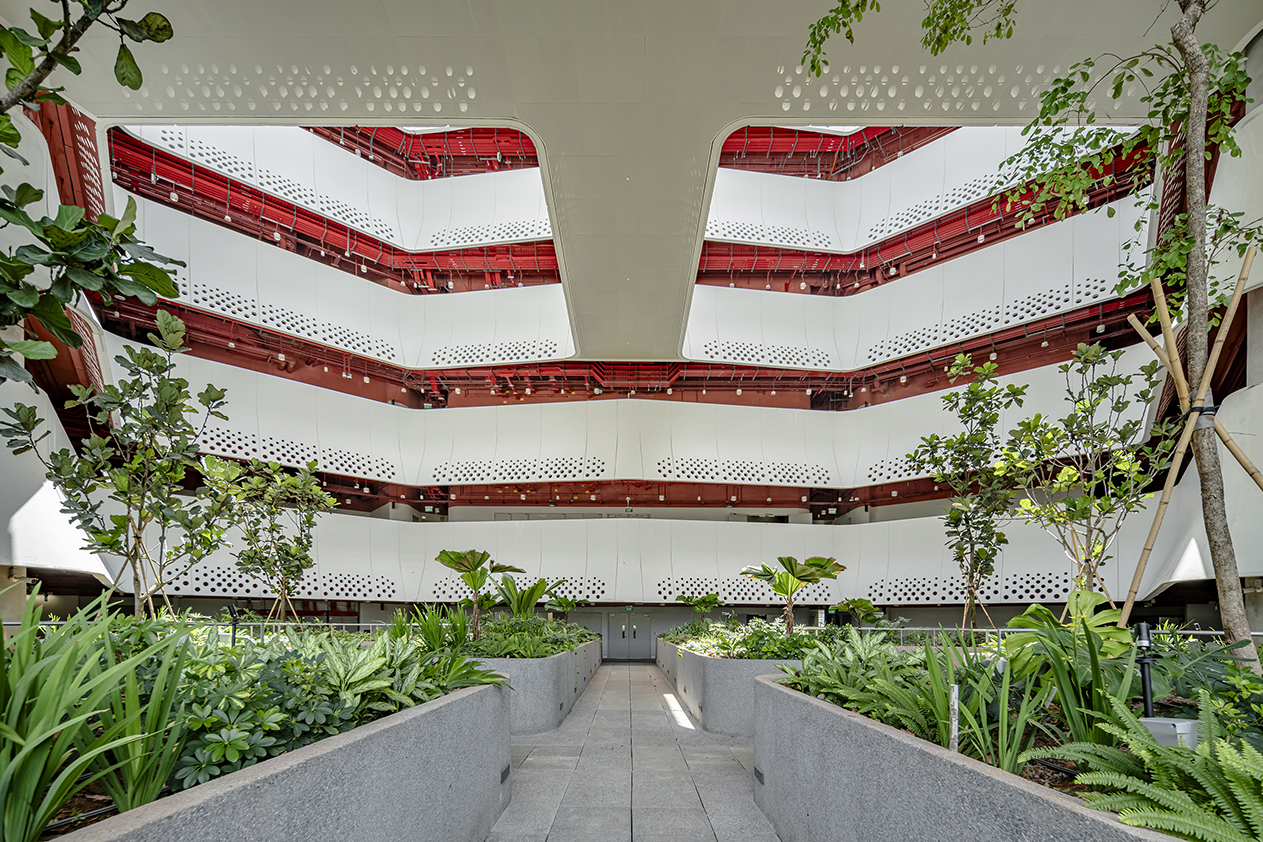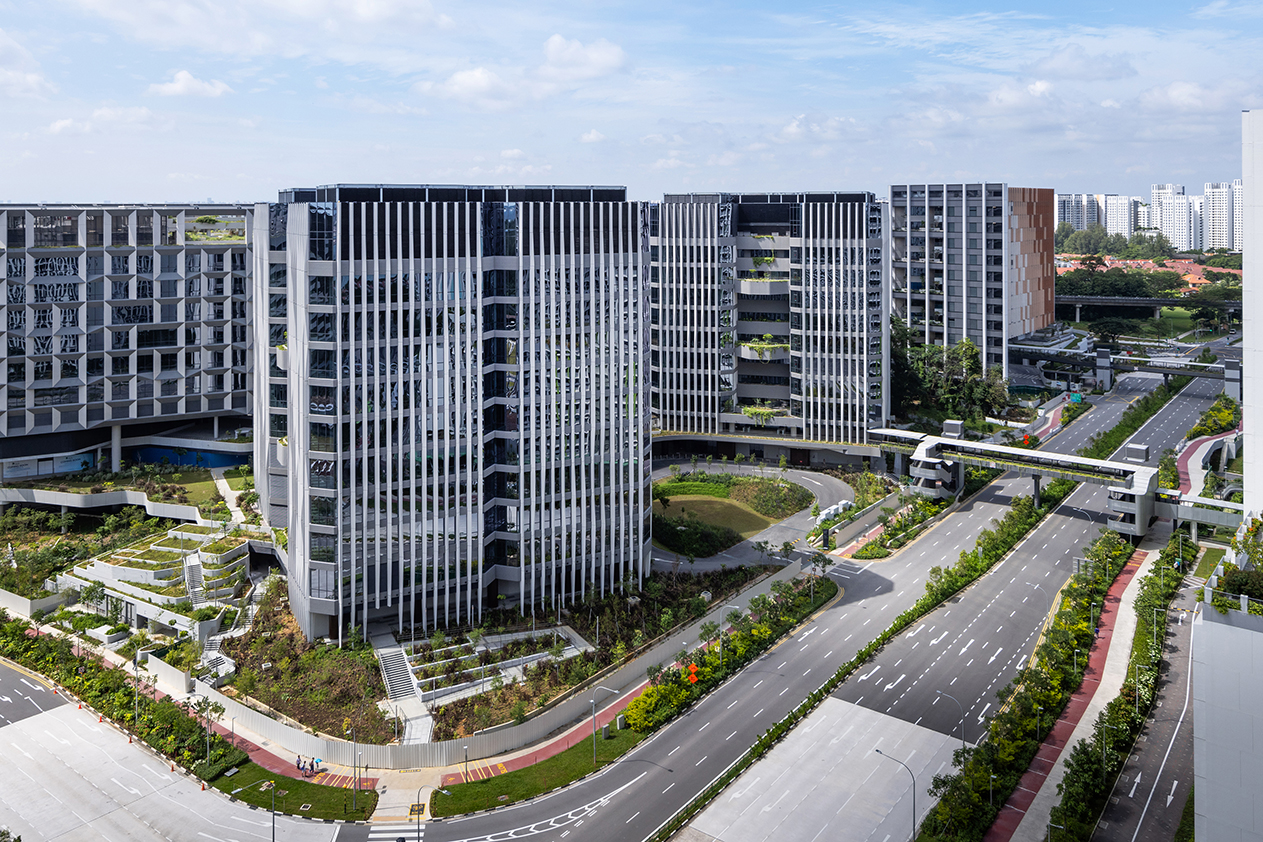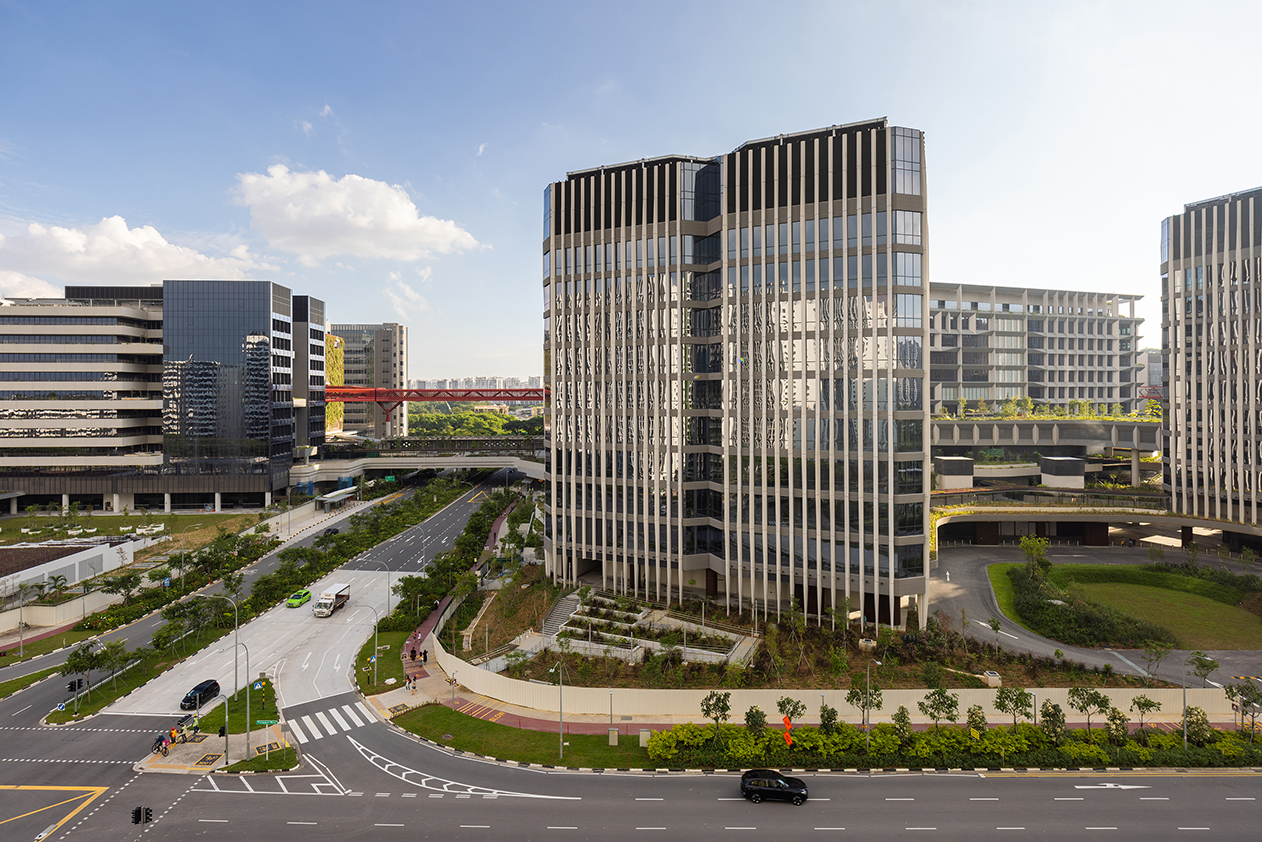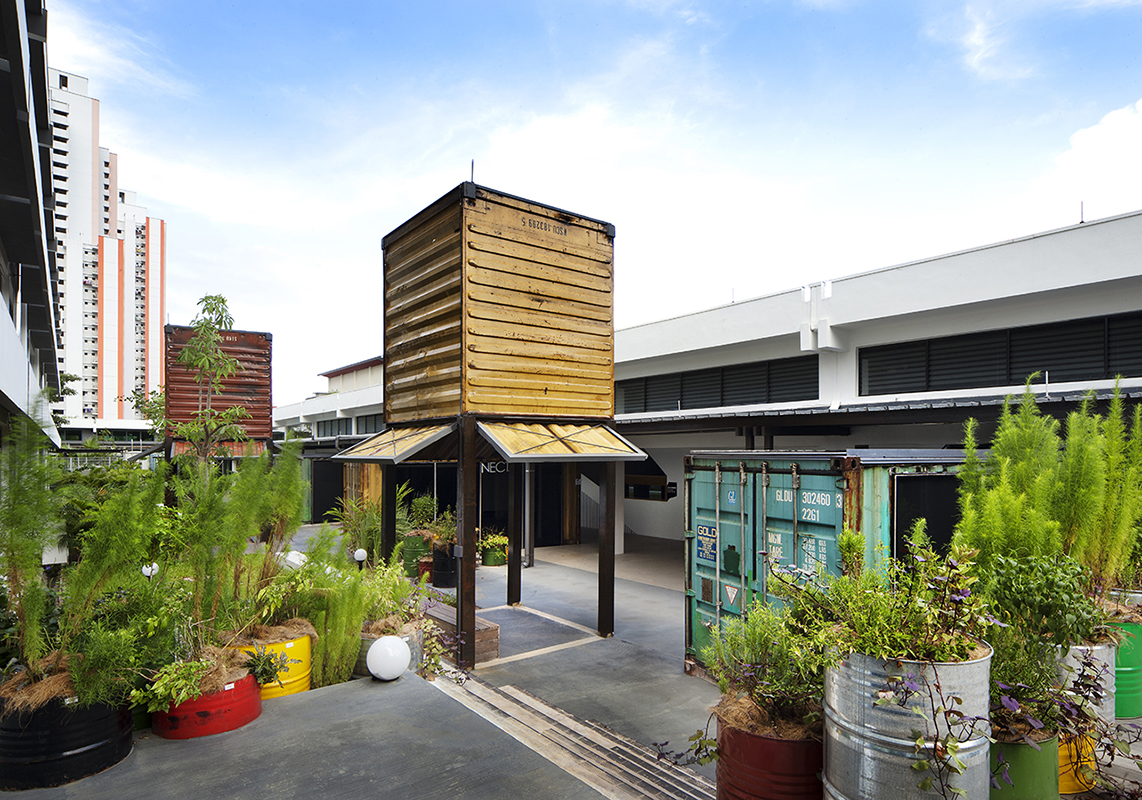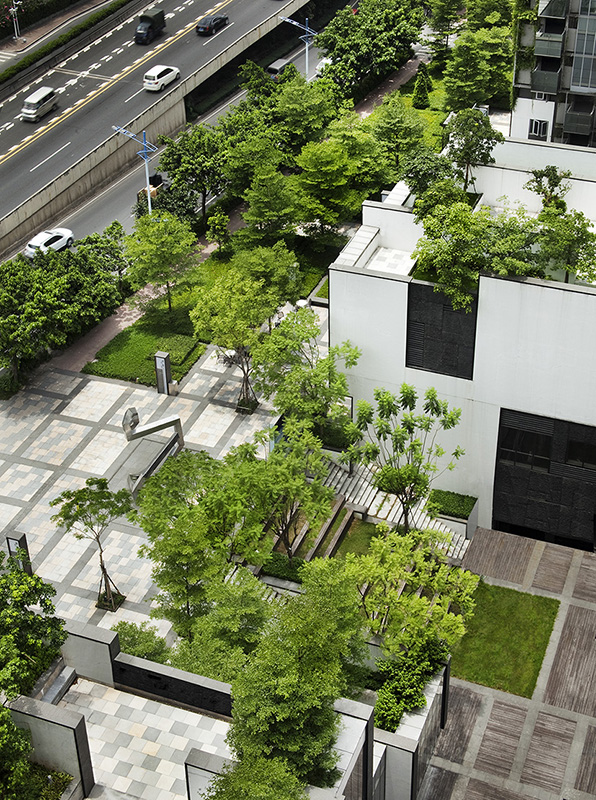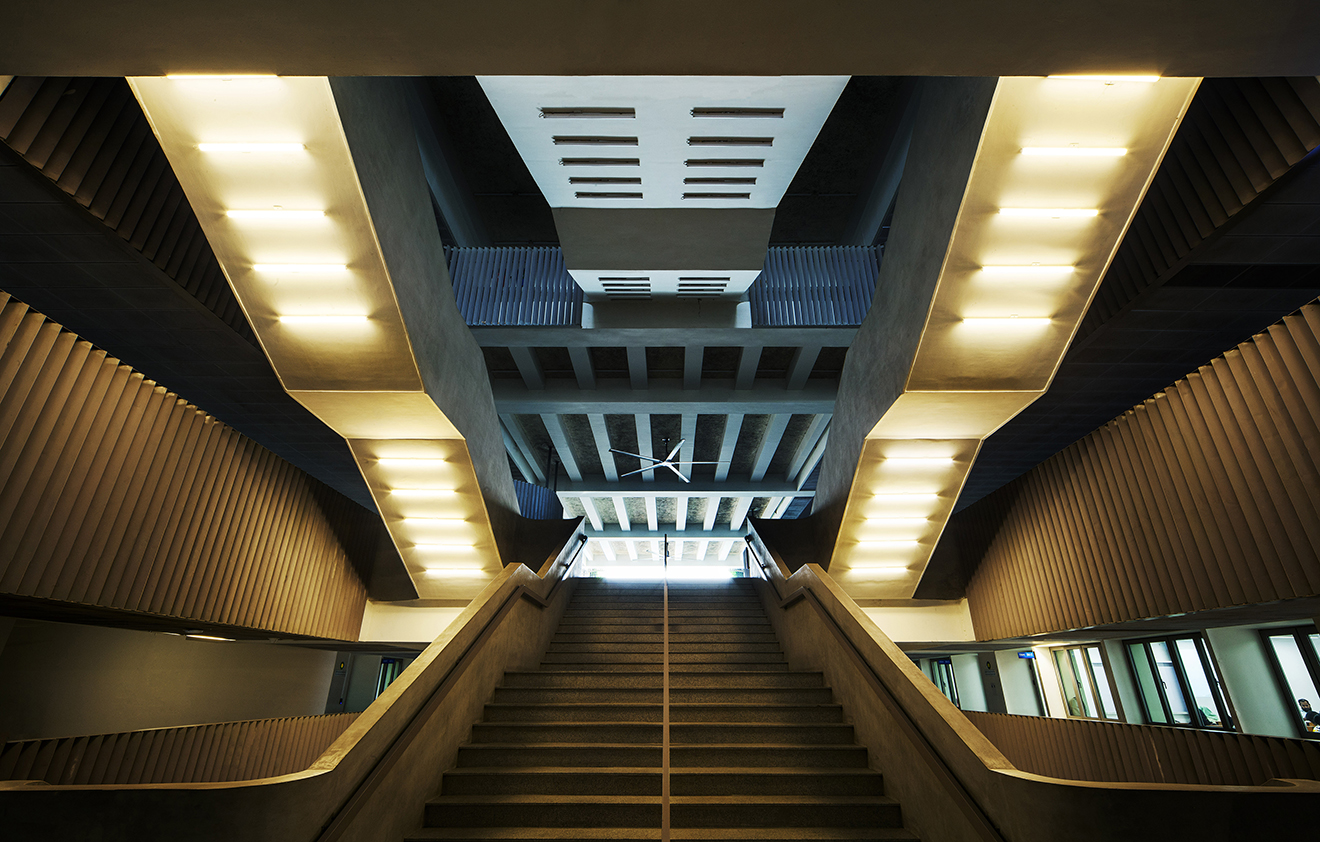Vertical Talent City
This scheme for a “Vertical Talent City” in Shenzhen was designed to be a one-stop solution for creative and artistic talent across the entire Zhujiang delta region. The whole development is conceived as a vertical city that integrates the different uses in two buildings on two plots, connected by sky bridges and platforms. Housing talent services, education and training, incubation spaces, communal sports facilities, retail and residential units, this micro city vertically stacks 4 stratums: Talent Park, Training Campus, Enterprise Hub and Smart Community. The design is built around the idea of sky streets and community spaces that encourage interaction and connection. Spacious open-air sky platforms offer rich amenities and landscaping and act as a bridge to the same thematic zones on different plots.
The Talent Park at the “Vertical Talent City” is located in the first of 4 stratums, spanning the ground floor to level 5. It includes an open-air urban plaza, commercial spaces, a bus terminal, the talent services centre and other office spaces.
The Training Campus is located in the stratum from the 6th to 9th level and is houses educational facilities, talent think tanks and talent training spaces. Large flexible spaces such as lecture halls can be set up between the floors according to needs. The public area of the “training camp” uses landscape and space to design create a vibrant campus atmosphere.
The Enterprise Centre stratum on the 10th to 21st level is a development platform for the talent industry. The flexible floor plan can meet the various space and functional needs of companies of all sizes. The air bridge platform is a communal space that can be used for socialising, exhibitions and leisure activities.
The Smart Community stratum tops off the Vertical Talent City and encompasses residential units, which enjoy great views as well as natural lighting and ventilation. The modular apartment unit design are efficient and economical. The bridges, platforms and roof provide amenities such as sports and social spaces as well as other services for the residents.
This pandemic has shown that new approaches are urgently needed to ensure the health and safety of building users. In response to this need the design places a strong emphasis on naturally ventilated public spaces and circulation routes to reduce the time spent in enclosed spaces with potential exposure to pathogens. A series of escalators in the atrium space connect the four different sky streets, forming a 3-dimensional loop which is open to the public and connects the different programmes to each other. With these vertical and horizontal links, lifts are only used in emergency situations and people can move without being confined to small spaces in large groups.





